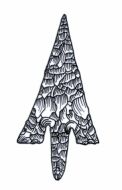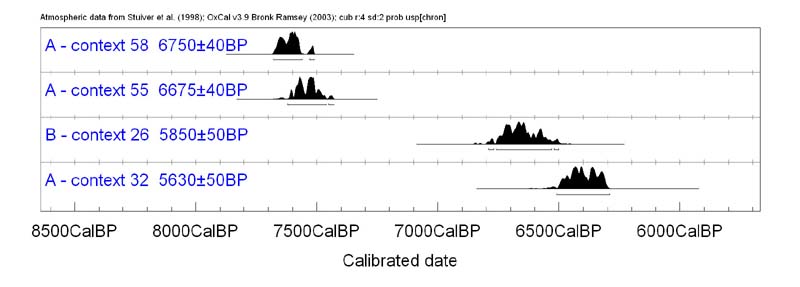
ADIAS new season underway - Interesting news about radiocarbon dating
of Marawah settlement
With the ADIAS 2004-2005 season now well under way, it's time to brief
readers of the Occasional Newsletter on our plans for the next few months,
and to report on the work undertaken since the summer break.
The initial focus over the last few weeks has been on the preparation
of papers for publication relating to the work carried out earlier this
year at Kharimat Khor al-Manahil,
near Umm az-Zamul, and on Marawah.
Two papers have recently been submitted for publication to the Proceedings
of the Seminar for Arabian Studies (for more details see below).
Dr Geoffrey King (ADIAS Academic director) arrived in Abu Dhabi for
a short visit in late October to work on a new book to be published
by ADIAS next year entitled "The Mosques of
Abu Dhabi" (for more details see below). Research is also under
way by ADIAS staff for a forthcoming book on "Shells
and Archaeology" (see below for more details).
This winter will see the launch of the exhibition
of Late Miocene fossils from Abu Dhabi. The exhibition is sponsored
by ADCO,
Takreer, BP
and the Environmental Research and
Wildlife Development Agency (ERWDA).
Work is also proceeding on the analysis of mammal and fish bone assemblages
recovered from excavations of two important Neolithic sites in the Gulf,
Dalma island in the
UAE, and site H3
in Kuwait.
Planning is now being finalised for an extensive programme of further
fieldwork early in the New Year, which will focus on continued investigations
of important Neolithic structures
and associated lithic scatters located deep in the south-east desert
of Abu Dhabi, near Umm az-Zamul. This work is being carried out in collaboration
with the Department of Antiquities
and Tourism in Abu Dhabi's Eastern Region.
Here, as elsewhere, we will be working in close collaboration with the
Environmental Research and Wildlife
Development Agency, ERWDA, with results being incorporated into
the Abu Dhabi Environmental Database. All of this work, of course, involves
extensive expenditure, and we are pleased to acknowledge the receipt
of further sponsorship from Dolphin supporting this work at Kharimat
Khor al-Manahil, and of support from BP
for some of our coastal geological studies (see below).
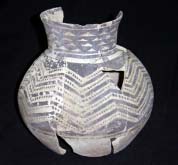
Pottery
jar from site MR11
Oldest archaeological site in the UAE
ADIAS has recently received some exciting news. Two charcoal samples
from the initial occupation horizon at site
MR11 on Marawah
island have been successfully radiocarbon dated to around 7600
years BP (see picture above). This makes the site the oldest confirmed
archaeological site in the United Arab Emirates. The samples were
AMS radiocarbon dated by the Scottish
Universities Environmental Research Centre at Glasgow
University.
The MR11 site is not only the earliest known site in the United Arab
Emirates, it also has the best-preserved and most sophisticated buildings
of Neolithic date that have so far been discovered anywhere in Eastern
Arabia (see ADIAS
May 2004 Occasional Newsletter). Among finds discovered this spring
at the site were a human skeleton, the earliest inhabitant of Abu
Dhabi so far discovered (see story below), as well as the most complete
Neolithic pottery vessel ever found in the UAE (see photo above).
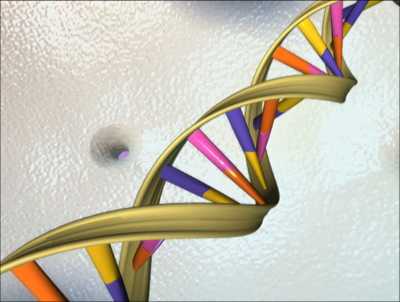
DNA double helix
Abu Dhabi Police help
identify UAE's oldest man
In the first collaboration of its type to have taken place in the
United Arab Emirates, scientists from the Forensic Science Laboratory
at Abu Dhabi Police Headquarters and archaeologists from the Abu Dhabi
Islands Archaeological Survey, ADIAS, have combined their skills to
study the oldest skeleton ever found in the United Arab Emirates.
The skeleton was found during excavations directed by Dr Mark Beech
earlier this year on Abu Dhabi's western island of Marawah.
During work at Site MR-11,
a series of stone buildings were identified. In one of them, there
was a human skeleton buried on a stone platform.
The skeleton was not well enough preserved, however, for the ADIAS
team to determine whether it was of a man or a woman. Now,
thanks to the expertise of the Forensic
Science Laboratory of the Abu
Dhabi Police Headquarters, the sex of the skeleton has been determined
by the recovery of ancient DNA. Deoxyribonucleic acid, DNA, is the
chemical at the centre of the cells of living things, which control
the structure and purpose of each cell and carries the genetic information
during reproduction. Radiocarbon dating, as well as associated finds,
demonstrates that the skeleton dates to around 7600 years ago (see
above). This makes the skeleton, and the building in which it was
found, the earliest evidence yet found of the presence of Man in the
Emirates.
Among parts of the skeleton that were preserved were several teeth,
and three of these have now been examined by Lt. Col. Ahmad Hassan
Al-Awadi, Director of the Forensic Science Laboratory and the Forensic
Pathology Unit at Abu Dhabi Police Headquarters. Although the ancient
DNA was not well preserved, using the latest forensic science techniques,
the Forensic Laboratory was able to determine that the skeleton was
a male from its DNA profile.
Preliminary studies suggest that the male individual was between approximately
20-40 years in age. Further research on the skeleton is being continued
by the Abu Dhabi Police forensic scientists, while ADIAS plans a further
season of archaeological excavations at the site in March-April next
year.
We are delighted with the results of this collaboration with the Abu
Dhabi Police Forensic Laboratory. The expertise of the police forensic
scientists has provided valuable new information about the oldest
human being ever discovered in the UAE. We are grateful to HH Major
General Sheikh Saif bin Zayed Al Nahyan, Under Secretary of the Ministry
of Interior, for his support for our work and we look forward to further
collaboration with the police on our studies of ancient skeletons
from Abu Dhabi's coast and islands.
The ADIAS work on Marawah is carried out in association with the Environmental
Research and Wildlife Development Agency, ERWDA, which is responsible
for the conservation of Marawah and adjacent islands, as well as the
surrounding seas, as part of the Marawah
Marine Protected Area.
More information about the recent work carried out by ADIAS can be
found on the following web pages:
www.adias-uae.com/marawah.html
www.adias-uae.com/mr11.html
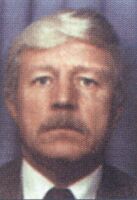 |
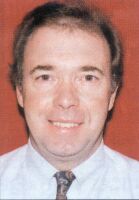 |
| Prof.
Graham Evans |
Dr.
Tony Kirkham |
Sabkha experts visit
Abu Dhabi
ADIAS associates Professor
Graham Evans and Dr. Tony Kirkham recently visited Abu Dhabi to attend
the 11th ADIPEC, Abu Dhabi International
Petroleum Exhibition and Conference, which took place at the International
Exhibition Centre in Abu Dhabi from 12-14 October 2004.
The event included an international conference on "Evaporite
stratigraphy, structure and geochemistry and their role in hydrocarbon
exploration and exploitation".
One session at the conference, entitled "Abu Dhabi Evaporite
Retrospective" saw Prof. Graham Evans gave a presentation on
the contribution of Dr Douglas Sherman to Evaporite studies. Evans
also presented a paper entitled "Arabian Tales: a historical
review of the Quaternary sedimentology of the Arabian Gulf and its
geological impact". Dr. Tony Kirkham presented a paper entitled
"Chloride and Sulphate Deposits, Abu Dhabi Coastal Regions".
During their stay in Abu Dhabi they also made fieldwork trips to Tarif
and to the island of Al-Aryam
and completed reports on the geology of the islands of al-Aryam
and Balghelam.
We are grateful to HH Sheikh Hamdan bin Zayed, Deputy Prime Minister,
Minister of State for Foreign Affairs and the Deputy Chairman of ERWDA,
for permitting access to Al-Aryam.
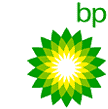
BP helps studies of UAE heritage
International oil company BP has once
again provided support for our studies of the geology and archaeology
of the coastal zone.
The help is in the form of assistance for research into two distinct
aspects of Abu Dhabi's heritage - research into the geology of the
island of Balghelam,
north-east of Abu Dhabi, and a study of Neolithic (Late Stone Age)
flint tools from the western island of Dalma.
Archaeological excavations on Balghelam, carried out with the permission
of the island's owner, Presidential Court Chamberlain HE Sheikh Surour
bin Mohammed Al Nahyan, have shown that the island was occupied as
much as four thousand years ago, perhaps by traders passing down the
Gulf from Bahrain. Balghelam is close inshore, but, like many of Abu
Dhabi's islands, is divided from the mainland by a shallow channel.
Earlier this year, Prof. Graham Evans and Dr Tony Kirkham undertook
research for ADIAS collecting rock samples from the island, which
are now to be dated at Britain's Southampton University. This will
help us to date the evolution of the shorelines of the islands and
of nearby coastal areas of Abu Dhabi over the past few thousand years,
adding valuable data to knowledge of the pattern of human settlement
in the area. The results from the analysis of the rock samples will
be included in a publication being prepared by ADIAS on the archaeology
of Balghelam.
Other excavations by ADIAS on the western island of Dalma have identified
one of the earliest human settlements known in the United Arab Emirates.
It was occupied between 6500-7500 years ago, or the Neolithic period.
The inhabitants of the Dalma site were trading by sea with Mesopotamia
(present-day Iraq), and depended for their food on shellfish, fish,
turtles and dugongs, as well as on domestic animals like sheep and
goats. In their hunting and fishing, and in processing their food,
they depended on flint (stone) tools, and several thousand tools and
other flint fragments have been recovered from the site.
ADIAS is now preparing a major publication on the Dalma site, which
will include cataloguing and analysis of the stone tools. This work
is being carried out by ADIAS associate, Dr Heiko Kallweit, a leading
expert on Arabian stone tools from the Neolithic period, who is based
in Freiburg, Germany.
BP are helping ADIAS carry out these two important pieces of research
by arranging for the shipping of the rock samples to Britain and the
Neolithic stone tools to Germany.
"We are delighted to be able to help ADIAS with their research,"
says David Dalton, General Manager of BP
Abu Dhabi. "BP has a history of nearly 70 years of involvement
with Abu Dhabi, and has supported scientific research here for decades.
Bodies like ADIAS are making important contributions to knowledge
of the geology and heritage of the United Arab Emirates, and BP is
pleased to be able to support their efforts."

Satellite image of Dalma
ADIAS team visits Dalma
An ADIAS team visited Dalma
island from 10-12 October 2004. Dr Mark Beech (ADIAS Senior Resident
Archaeologist) and Karen Cooper (ADIAS Administrative Assistant) visited
Dalma and met with Muhana Obaid Ghaith Al-Muhairi, Director of Dalma
Municipality, as well as with contractors working for the Municipality
on the island.
The purpose of this was to discuss and organise the fencing of a number
of important archaeological sites located in Dalma town. These were
the early and middle-Islamic period settlement and graveyard located
inside a farm (site DA7), and the Islamic graveyard located just behind
the Co-Op shopping mall in the town (site DA8).
Visits were also made to the important Ubaid-related settlement on
Dalma (Sites DA11 and DA12). It was recommended that fencing be placed
around site DA12, and that the compound where site DA11 is located
be fully protected.
A report on this visit which includes recommendations for further
actions has been submitted to the Abu
Dhabi Municipality.
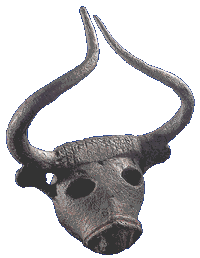
Bull's head from the Danish excavations at Barbar,
Early Dilmun c.2000-1800 BC
Dilmun Civilisation
Celebration in Bahrain
Dr Mark Beech, our Senior
Resident Archaeologist, will be participating in a three
day festival in Bahrain from 27-30 November commemorating the
50th anniversary of the discovery by a Danish team in 1954 of the
remains of the Dilmun civilisation.
The event coincides with the completion of a 17-year renovation project
at the Bahrain Fort,
which dates back to the Dilmun period. Apart from presentations, speeches
and entertainment, there will also be excursions to Bahrain's archaeological
sites on November 28 at 4pm. Participants will also visit the Barbar
Temple, Saar Settlement,
A'ali burial mounds and
the royal mounds in A'ali.
Archaeologists from Denmark will carry out further excavations at
the A'Ali burial mounds and the royal burial mounds during the festival,
while a new exhibition on "Discovering Dilmun: 50 years of Danish
Investigations" about all 12 Danish expeditions to Bahrain since
1954 will be opened at the Bahrain
National Museum. It has been prepared by the Moesgard
Museum in Denmark.
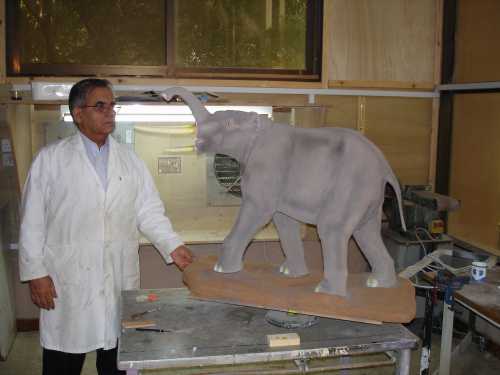
Abdul Hafeez stands by the model of the Late Miocene
elephant
Fossil Display
Our model
of the Late Miocene elephant, Stegotetrabelodon syrticus, which
was constructed in collaboration with Abdul Hafeez from the Private
Department of H.H. Sheikh Zayed Bin Sultan Al Nahyan, has now been
completed.
Work is now under way on completing the construction of the display
case. The fossil display will be housed in the ERWDA
headquarters, and is being sponsored by ADCO,
Takreer and BP,
with support from ERWDA and the Private Department. It is planned
that the inauguration of the display will take place around UAE National
Day in early December.
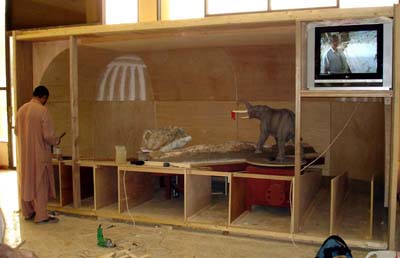
Building the showcase for the fossil
display

Dr Mark Beech discovers an almost complete equid
(Hipparion)
jaw with teeth at Ruwais
New fossil site discovered
at Ruwais
On October 12th an ADIAS
team, comprised of Dr Mark Beech and Karen Cooper, made a brief visit
to the Ruwais fossil
site. A new fossil site was discovered by chance, adjacent to the
area where the new BeAAT installation is being constructed.
A remarkable fossil specimen was discovered at the new locality (site
RUW0065) at Ruwais. This was an almost complete jaw of the primitive
three-toed equid known as Hipparion. The jaw still had almost
all its teeth in place (see photo below). Other specimens collected
from the same locality included fossils from crocodile, fish, turtle
and elephant.
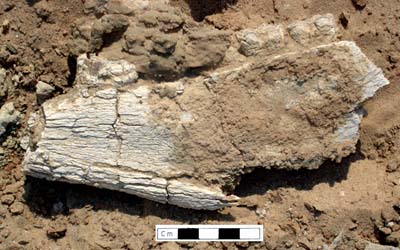
Close-up of the equid
(Hipparion) jaw with teeth at Ruwais
Regular readers of the
ADIAS Occasional Newsletter will recall the work carried out by ADIAS
during the winter of 2002 and spring of 2003 when over 7000 fossil
fragments were recovered from surface survey of an area being developed
by Takreer at Ruwais.
A number of astonishing fossil specimens were excavated during this
previous work, including an almost complete 2.54 metre long tusk of
the primitive elephant species, Stegotetrabelodon
syrticus.
Other previously-unrecorded fossil sites were found in July by Simon
Aspinall, Director of ADIAS Environmental Studies, close to the FERTIL
and Borouge
plants in the Ruwais industrial area. One, of particular interest,
was close to the Borouge plant, and produced fossils from several
mammal species.
This July work was carried out on behalf of GASCO,
who are planning to develop their plant at Ruwais, and asked ADIAS
to check the area for fossils. We are most grateful to GASCO for their
support.
These fossil sites date back to the Late
Miocene period, 6-8 million years ago. Fossils found on these
sites include a wide range of material, including fish, crocodile,
turtle, molluscs and mammals. Readers of the Newsletter will soon
be able to see for themselves many of these important fossils when
they go on display in Abu Dhabi this winter.
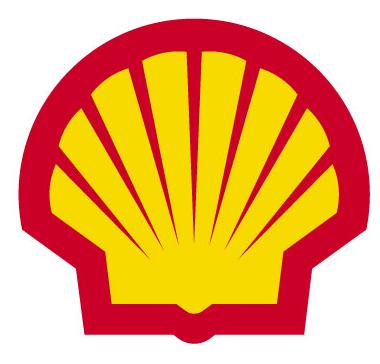
Shells and Archaeology
ADIAS is currently working
on the preparation of a book entitled "Shells and Archaeology".
This work is rather appropriately being sponsored by the oil company
Shell, through their Abu Dhabi
office.
In early December, Emily Glover, a research associate from the Mollusc
section at the Natural History Museum
in London, will visit Abu Dhabi for 10 days to collaborate with Dr.
Mark Beech on work on the project.
The book discusses the history and methods of research on marine mollusca
in the Gulf region, the environmental history of the Gulf, and the
human use of marine shells from prehistory to recent historical times.
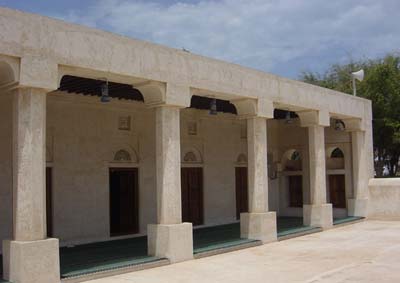
The al-Muhannadi mosque on Dalma island
Mosques of Abu Dhabi
Dr Geoffrey King (ADIAS
Academic Director) is shortly due to arrive in Abu Dhabi. He will
be working on material for a new book to be published by ADIAS in
2005 entitled "The Mosques of Abu Dhabi". During his stay
Dr. King will be visiting the ADCO photographic archives to collect
more information for this project.
A summary of information about three important historic mosques on
the island of Dalma in an article by Dr King will be published in
the forthcoming issue of TRIBULUS, the Journal of the Emirates Natural
History Group (for more details see below).
You may be interested to view on the ADIAS website some films
with sound commentary (mpeg movies) / guided tours of the Dalma mosques
by Dr Geoffrey King (in english) and Fathy Mohammed Abdullah, curator
of the Bayt al-Muraykhi Museum from Dalma Public Works Department
(in arabic).
Lectures
Over the last few months,
ADIAS team members have been active in giving lectures in Abu Dhabi.
Dr Mark Beech gave a briefing on underwater archaeology to divers
involved in the Clean-Up
Arabia event which was held at Mirfa on 17th September. The briefing
took place in ERWDA Abu Dhabi, on the 15TH September.
Peter Hellyer lectured on the 5th October 2004 to the Emirates Natural
History Group, entitled "An Introduction to the Tribes of Abu
Dhabi", in the Cultural Foundation.
On the 9th November, Dr Mark Beech will talk about the recent archaeological
work carried out on Marawah island to the Al
Ain branch of the Emirates Natural History Group. The lecture
will be held in the Intercontinental Hotel in Al Ain starting at 8
p.m. All are welcome.
Forthcoming Publications
Two papers on ADIAS work
are due to be published shortly.
The next issue of TRIBULUS, Volume 14.2, the bi-annual journal of
the Emirates Natural History Group, will include a paper by Dr. Mark
Beech and Nasser Al-Shaiba on the newly discovered ancient boat mooring
sites on Marawah island.
It also includes a paper by Dr. Geoffrey King, ADIAS Academic Director,
on the al-Muhannadi,
al-Muraykhi and al-Dawsari mosques on Dalma island, some of the
UAE's most important surviving buildings. Copies of TRIBULUS will
be available from the ADIAS office.
Two ADIAS papers were presented this summer at the Seminar for Arabian
Studies held at the British Museum from 22-24 July, 2004. For more
details about the conference visit the following website: www.arabianseminar.org.uk
The ADIAS papers presented at the conference were: "Kharimat
Khor al-Manahil and Khor Al Manahil - New Neolithic sites in the south-eastern
desert of the UAE", by: H.Kallweit, M. Beech and W. Yasin Al-Tikriti;
and "New evidence for the Neolithic Settlement of Marawah Island,
Abu Dhabi, United Arab Emirates", by: M. Beech, R. Cuttler, D.
Moscrop, H. Kallweit and J. Martin.
Both these papers will be published in the "Proceedings
of the Seminar for Arabian Studies, Volume 35" due to be
published in June 2005. Copies of the Proceedings can be ordered from:
ArchaeoPress,
Gordon House, 276 Banbury Road,
Oxford OX2 7ED, U.K.
Tel/Fax:+44 (0)1865 311914
Email: bar@archaeopress.com
Web: www.archaeopress.com

